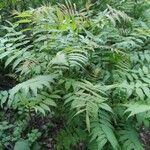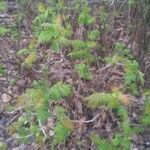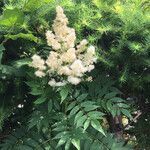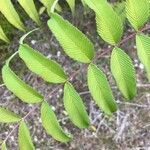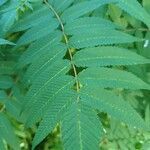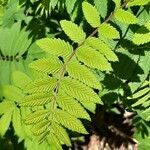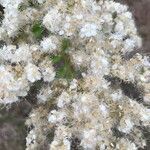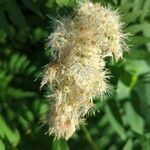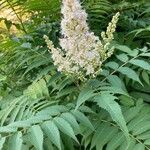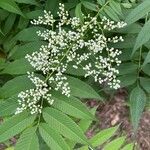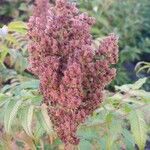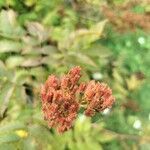Plants 10–30 dm. Leaves: blade 14–30 × 5–17 cm; leaflets (9–)11–21(–29), oblong-ovate to elliptic, (25–)35–75(–95) × (8–)12–20(–25) mm, abaxial surface glabrous or ± sparsely stipitate-stellate, adaxial with some simple hairs near margins, otherwise glabrous. Inflorescences (7–)10–15(–34) × (3–)4–7(–14) cm. Pedicels (and axes) usually puberulent, ?stipitate-glandular, less often stipitate-stellate?. Flowers 10–14 mm diam. (anther tip to tip); hypanthium puberulent, hirtellous, stellate, or glabrous; sepals ovate to oblong-ovate, margins often glandular-serrate; petals ovate to orbiculate, 2.7–4.3 × 2.1–3.4 mm; stamens 20–35[–50], 2–6.5 mm (of variable length); ovaries sericeous, styles 1.3–3.5 mm. Follicles 4.5–6 mm, sericeous. 2n = 36.
Shrub 1–2 m, the younger parts with a flocculent, deciduous, stellate tomentum; stipules lanceolate, 1 cm; lfls lanceolate, 3–7 cm, acuminate, doubly serrate; infl 1–3 dm, with ascending branches; sep 1.3–1.5 mm, often erose; pet 2.5–3 mm; stamens to 8 mm; pistils pubescent; 2n=36. Native of e. Asia, sometimes found along roadsides and fence-rows as an escape from cult. July. (Schizonotus s.)
A shrub. It grows 3 m high and spreads 3 m wide. It produces suckers. It has stiff upright stems. The leaves have leaflets along the stalks. The flowers are small and white. They occur in upright groups. The flowers have 5 petals.
